Annapurna Base Camp Trek From Kathmandu
Set out on an epic journey from Kathmandu to the Annapurna Base Camp, where every step unfolds a new adventure amidst the towering peaks and tranquil valleys. The trek beckons with promises of breathtaking vistas and culture, but what truly awaits is a transformative experience that transcends the ordinary.
From the bustling streets of Kathmandu to the serene trails of the Himalayas, the Annapurna Base Camp trek holds the key to unlocking a world of unparalleled beauty and discovery, making it a must for any avid trekker seeking to challenge both body and spirit.
Key Points
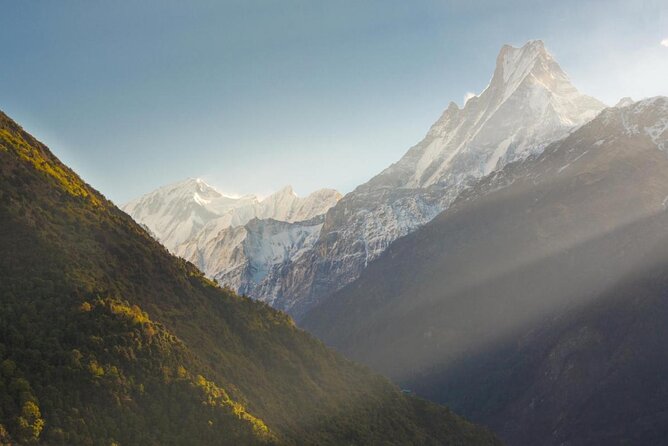
- Stunning views of peaks and culture await on the Annapurna Base Camp trek.
- Essential permits like ACAP and TIMS ensure a smooth journey without delays.
- Comfortable accommodation, nourishing meals, and health precautions enhance the trekking experience.
- Prioritize safety with appropriate insurance coverage and knowledge of emergency protocols for a worry-free adventure.
Trek Itinerary Overview
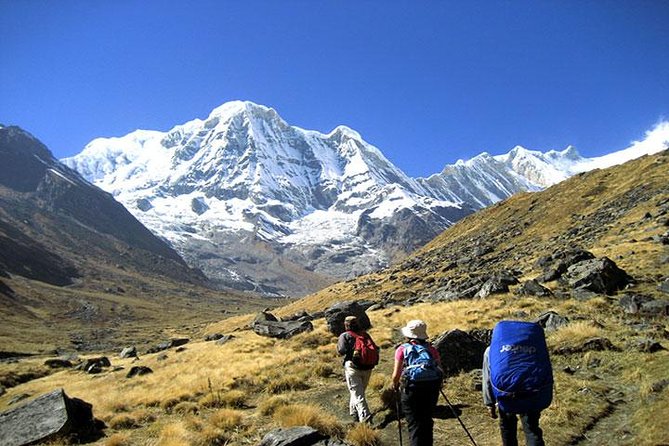
Set out on an unforgettable journey through the breathtaking Annapurna region with a detailed trek itinerary filled with awe-inspiring landscapes and cultural experiences.
The trail highlights of this trek include the stunning views of snow-capped peaks like Machapuchare and Annapurna South, lush rhododendron forests, and picturesque villages inhabited by diverse ethnic groups.
Travelers will have the opportunity to enjoy the rich local culture, interacting with Gurung and Magar communities, learning about their traditions, and enjoying warm hospitality along the way.
This trek offers a unique blend of natural beauty and cultural encounters, making it a truly enriching experience for those seeking adventure and insight into the heart of the Annapurna region.
Required Permits and Documents
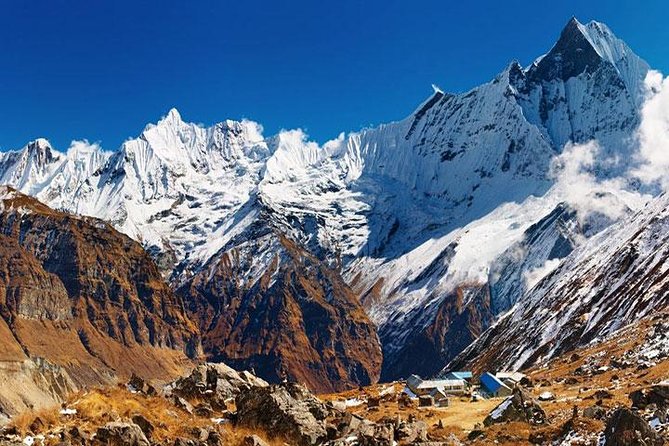
Travelers are required to ensure they have the necessary permits and documents before embarking on the Annapurna Base Camp trek from Kathmandu. Permit regulations dictate that trekkers must obtain an Annapurna Conservation Area Permit (ACAP) and a Trekkers’ Information Management System (TIMS) card. The ACAP aims to conserve the natural and cultural heritage of the region, while the TIMS card helps monitor trekkers for their safety. Document preparation should include a copy of the passport and passport-sized photos to acquire these permits. Ensuring these documents are in order before commencing the journey will prevent any delays or issues during the trek. Below is a table summarizing the required permits and documents:
| Permit/Document | Description |
|---|---|
| Annapurna Conservation Area Permit (ACAP) | Conservation of natural and cultural heritage |
| Trekkers’ Information Management System (TIMS) card | Monitor trekkers for safety |
Accommodation Details and Meals
Before setting off on the Annapurna Base Camp trek from Kathmandu, ensuring a comfortable stay and nourishing meals is paramount for trekkers exploring this breathtaking region. Accommodation options along the trail range from cozy lodges to hotels, offering twin/double sharing basis rooms for overnight stays.
Meals provided include Breakfast, Lunch, and Dinner, with varying choices at different stops during the trek. Trekkers can expect a mix of traditional Nepali dishes and international cuisine to refuel after a day of hiking. From hearty dal bhat to pasta dishes, there are meal choices to suit different preferences.
Whether resting at a lodge or hotel, trekkers can look forward to replenishing their energy with satisfying meals throughout the trek.
Altitude and Health Considerations
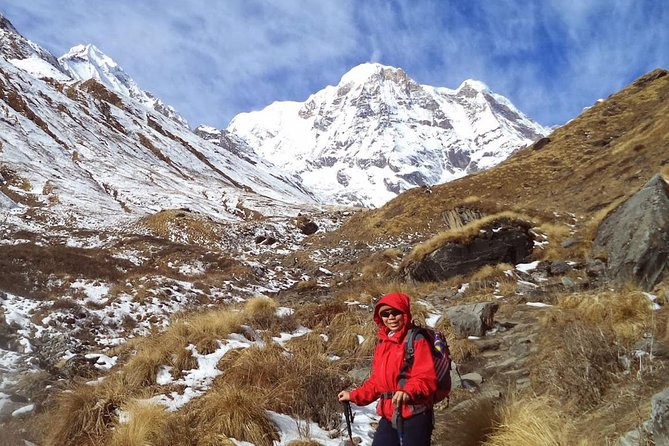
Altitude considerations and health precautions are crucial aspects for trekkers embarking on the Annapurna Base Camp journey from Kathmandu. As the trek reaches altitudes of approximately 4,130m, altitude acclimatization is vital to prevent altitude sickness. Weather variations can also impact health, making it essential to be prepared for changing conditions.
It’s recommended to consult with a doctor before the trip, especially for individuals with pre-existing health conditions. Tour leaders are trained in first aid, providing an added layer of safety. Plus, having travel insurance that covers medical expenses is mandatory.
Trekkers should pay attention to their bodies, stay hydrated, and adhere to proper acclimatization practices to ensure a safe and enjoyable trekking experience.
Logistics and Weight Recommendations

When embarking on the Annapurna Base Camp trek from Kathmandu, it’s essential to consider logistics and weight recommendations to ensure a smooth and enjoyable journey.
Packing tips are crucial; it’s recommended to pack light, aiming for under 10 kg to ease the trekking experience. Fitness preparation is key, as the trek reaches altitudes of approximately 4,130m, requiring good physical condition. Travelers should consult with a doctor beforehand due to altitude effects.
Plus, required documents for permits include a passport copy and photos. Luggage storage is available at the starting point, facilitating the weight limit recommendations. Private tours ensure personalized attention for the group, enhancing the overall trekking experience.
Travel Tips and Recommendations
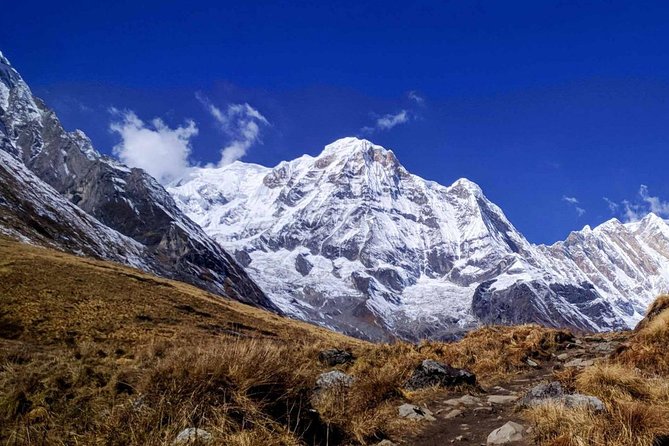
Enhancing your Annapurna Base Camp trekking experience involves incorporating practical travel tips and recommendations to ensure a memorable journey.
When packing essentials, remember to include layers for varying temperatures, sturdy hiking boots, sunscreen, and a refillable water bottle. Embrace the local culture by learning a few basic Nepali phrases and respecting customs like removing shoes before entering homes or temples.
Engaging with locals can enrich your experience. Plus, try the traditional Nepali dish Dal Bhat for a taste of local cuisine.
Being culturally sensitive and open-minded will foster meaningful interactions along the trek. By being prepared with the right gear and showing respect for the local way of life, you can make the most of your Annapurna adventure.
Safety Measures and Insurance
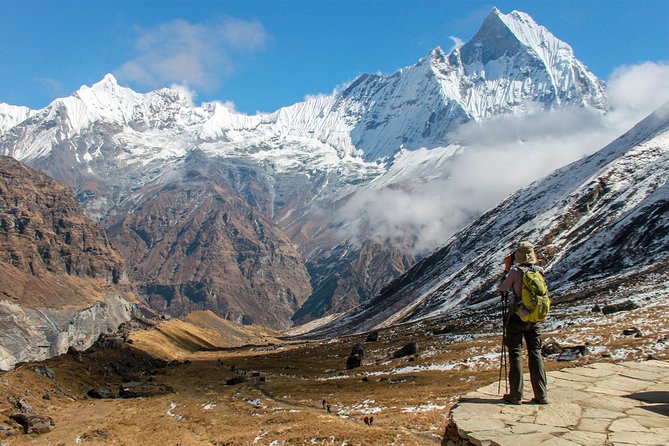
To ensure a safe and worry-free trekking experience to Annapurna Base Camp, travelers are advised to carefully consider safety measures and secure appropriate travel insurance coverage. Insurance coverage is crucial for emergencies at high altitudes, where unforeseen circumstances can arise.
It’s recommended to choose a policy that specifically covers trekking activities and potential medical evacuations. Plus, familiarize yourself with emergency protocols provided by your tour guides, including communication plans, evacuation procedures, and first aid training.
Prioritize safety by being well-prepared and informed about the risks associated with high-altitude trekking. Travel insurance covering medical expenses isn’t only required but essential for peace of mind during your Annapurna Base Camp adventure.
Common questions
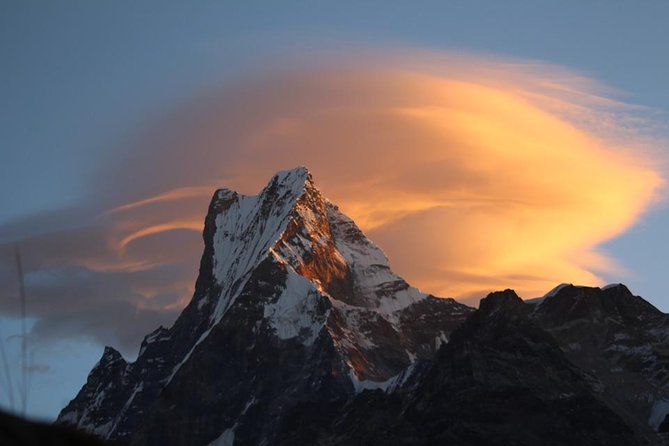
What Is the Best Time of Year to Do the Annapurna Base Camp Trek for Optimal Weather Conditions?
The best time for the Annapurna Base Camp trek, ensuring optimal weather conditions, is during the autumn months of September to November. This period offers clear skies, moderate temperatures, and colorful landscapes, creating an ideal trekking experience.
Are There Any Cultural or Religious Customs That Trekkers Should Be Aware of and Respectful Towards During the Trek?
When trekking, understanding cultural etiquette and religious practices is essential. Respect local customs, dress modestly, ask before taking photos, and be mindful of sacred sites. Engage with locals, learn about their traditions, and embrace the cultural richness.
Is There a Specific Packing List or Gear Recommendations for the Annapurna Base Camp Trek?
When preparing for trekking, packing essentials like appropriate clothing, sturdy footwear, and a backpack are crucial. Gear rental is an option for those needing specific equipment. Altitude acclimatization and staying hydrated are essential for a successful journey.
Are There Any Opportunities for Cultural Experiences or Interactions With Local Communities Along the Trek Route?
Opportunities for cultural experiences and interactions with local communities include visits to charming villages along the trek route. Travelers can witness traditional dances, immerse in local customs, and engage with the warm hospitality of the Nepalese people.
How Are Emergencies or Evacuations Handled in Case of Accidents or Health Issues During the Trek?
In case of accidents or health issues during the trek, emergency response is prompt. Trained staff will implement evacuation procedures efficiently. Travel insurance covering medical expenses is essential. Safety measures prioritize the well-being of trekkers.
Last Words
Embarking on the Annapurna Base Camp trek from Kathmandu promises an unforgettable adventure filled with stunning landscapes, rich culture, and warm hospitality.
With proper permits, comfortable accommodation, and delicious meals along the way, trekkers can enjoy the beauty of the Nepalese mountains.
Remember to stay hydrated, acclimatize properly, and pack light for a safe and enjoyable journey to one of the world’s most renowned trekking destinations.